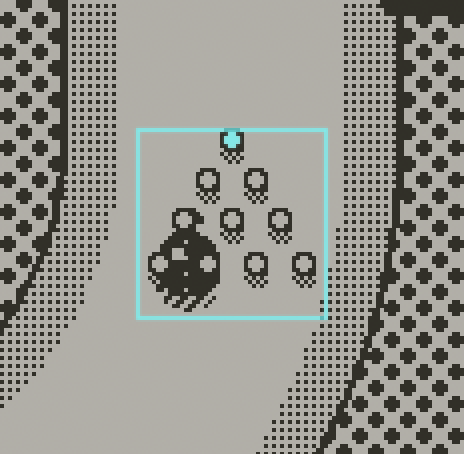I'm experiencing an issue with sprite collisions using the Lua SDK on Mac. I have a simple bowling simulation in which I'm attempting to detect when the Ball (a sprite) enters the PinRack (that is, the boundary of the square area containing the pins, also a sprite). For convenience in laying out the pins, I've adjusted its center point so that it's situated at the head pin. (In retrospect, maybe that's not the right approach, but regardless it exposes this bug.) That all works as expected, as shown here:
The magenta lines are the collision rects drawn by the simulator. The cyan box is my own debug drawing of the collision rect for the rack (which uses getCollideRect and perfectly overlaps the magenta one for the pin deck in that screenshot). The cyan dot is the "center" point of the rack (at which it is positioned, and about which it rotates, as expected). Although drawn correctly, collisions seem to be misaligned, as though the rack sprite were actually centered at the head pin (that is, as though the head pin were equidistant from all sides of the rack, instead of at its front edge).
The PinRack has an update function which checks for collisions. The only object in the same collision group is the Ball. Here's the relevant excerpt — to illustrate the issue, I'm just aborting the moment a collision is detected, to enable me to capture a screenshot of the frame in which it occurs:
local collisions = self:overlappingSprites()
for i = 1, #collisions do
local sprite = collisions[i]
-- the ball has ented the pin deck
print("PinRack Collided with ", sprite.className) -- always Ball
assert(false) -- stop the moment the collision is detected
end
My expectation is that this should happen the moment the magenta box around the Ball intersects the magenta/cyan box around the PinRack. Instead, the intersection triggers early when the ball approaches the pins from the front (note that the magenta collision rects disappear upon the assertion, but I promise the collision rect for the ball hasn't changed!):

And late when approaching from behind (here I've rotated the rack 180º about its head pin "center"):

The ball appears to be either half-pindeck-size distance from it, or half-pindeck-size through it depending on the direction of entry. The observed behavior suggests that the rect actually being used in collisions is centered (truly) around the adjusted center, rather than respecting that adjusted center in order to align with the visual representation of the intended collide rect. This theory is reinforced by the fact that collisions with each side work as expected, given that the center point is still at the true center in that axis.
I’m reasonably confident in my expectation and my analysis, but please set me straight if I’m thinking about this wrong. Thanks!
